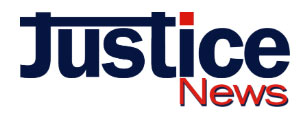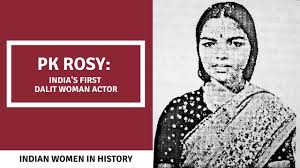Why the RTE Act Struggles to Take Root in India’s Private Schools

A crucial aspect of the RTE Act—government reimbursement for EWS admissions—has been marred by delays and non-payment.
The Right to Education (RTE) Act, enacted in 2009, was a landmark step toward universalizing education in India. It aimed to provide free and compulsory education for children aged 6 to 14 under Article 21A of the Constitution. A key provision, Section 12(1)(c), mandated private unaided schools to reserve 25% of their entry-level seats for children from SC/ST (), OBC (Other Backward Classes), economically weaker sections (EWS) and disadvantaged groups, with the government promising reimbursement.
However, more than a decade later, the Act’s implementation in private schools remains inconsistent due to legal loopholes, financial hurdles, and weak enforcement. One of the biggest challenges is the exemption granted to minority-run schools under Article 30 of the Constitution. A 2014 Supreme Court ruling (Pramati Educational and Cultural Trust v. Union of India) upheld this exemption, allowing many elite schools to claim minority status and avoid compliance.
This has significantly reduced the number of schools participating in the 25% quota, placing a disproportionate burden on those that do comply. In some cases, institutions have exploited this loophole. A 2023 investigation by the Centre for Policy Research found that nearly 40% of private schools in major metropolitan areas such as Delhi, Mumbai, and Bengaluru had applied for minority status since 2015, despite having no clear affiliation with any religious or linguistic minority.
Critics argue that such practices have diluted the impact of the RTE Act, making it difficult for underprivileged students to gain admission to prestigious private schools. Even in states where the Act applies, local policies often weaken its impact. In Maharashtra, Karnataka, and Kerala, the “neighborhood school” rule exempts private institutions from the 25% quota if a government school is available within one kilometer.
While meant to encourage public schooling, in practice, it shifts the burden onto an already struggling system, undermining the Act’s goal of social integration through private education. Education policy expert Prof. Rukmini Banerjee from Pratham Foundation states, “The one-kilometer rule effectively pushes children into underfunded government schools while allowing private institutions to operate without inclusivity. It limits the choice of parents and defeats the purpose of the RTE Act.”
A crucial aspect of the RTE Act—government reimbursement for EWS admissions—has been marred by delays and non-payment. In states like Maharashtra and Tamil Nadu, private schools report unpaid dues in the thousands of crores. This financial strain has led many institutions to resist RTE admissions. For example, in 2022, Maharashtra’s private school associations protested against years of pending reimbursements. Some schools reported waiting for payments for over five years, forcing them to either cut down on resources or limit RTE admissions.
A school principal from Chennai, speaking anonymously, shared, “We have nearly 80 RTE students, but the government has not reimbursed us in years. We continue to support them, but this is becoming financially unsustainable.” Many high-end private schools push back against the RTE mandate, citing concerns about financial viability and the so-called “social mismatch” between EWS students and affluent peers. Some schools impose excessive documentation requirements or create bureaucratic hurdles to dissuade RTE applicants.
A 2021 study by the National Institute of Educational Planning and Administration (NIEPA) found that nearly 60% of private schools either rejected applications based on excessive paperwork demands or discouraged EWS parents by emphasizing additional costs like transport, uniforms, and books—expenses that the government does not cover under the Act. Parents like Sunita Devi, a domestic worker from Delhi, share their struggles: “I applied for my son’s admission under RTE, but the school asked for so many documents—income certificates, address proofs, even bank statements. I felt like they didn’t want us there.”
Despite its ambitious objectives, the RTE Act suffers from lax enforcement. State governments rarely take strict action against non-compliant schools. Inspections are infrequent, and violations—such as rejecting RTE applicants or failing to meet infrastructure norms—often go unchecked. A 2014 national survey found that fewer than 10% of private schools fully complied with RTE provisions, highlighting a major accountability gap. Even when complaints are filed, action is rarely taken.
In 2019, an NGO filed over 200 complaints against non-compliant schools in Rajasthan, yet only 15 schools faced penalties, and the fines imposed were minimal. While elite schools resist the Act, small-budget private schools, particularly in rural areas, face a different challenge. Many lack the resources to meet RTE’s infrastructure and staffing requirements, leading to closures rather than compliance. A case study from Jharkhand highlights this issue. In 2023, over 300 low-cost private schools in the state shut down due to their inability to meet RTE norms, leaving thousands of children without alternatives. As a result, rather than benefiting from better education, many children were forced into overcrowded government schools.
Corruption and limited public awareness further hinder RTE implementation. The admission lottery system is sometimes manipulated, and many eligible families remain unaware of their rights. The complexity of the application process also discourages participation, leaving many RTE-mandated seats unfilled. A 2020 investigation in Uttar Pradesh revealed that school officials often demand bribes from EWS parents to process admissions.
Many families, unaware of their entitlements, end up paying middlemen to secure seats meant to be free under the RTE Act. Some states, like Punjab, have chosen to focus on improving government schools rather than enforcing RTE quotas in private institutions. While this approach promotes public education, it moves away from the Act’s goal of integrating marginalized children into private schools, potentially reinforcing existing inequalities. Prof. Kiran Bhatia, an education reformer, explains: “If we strengthen public schools, fewer students will need to seek RTE admissions in private institutions. However, this should not come at the cost of ignoring private school participation. The RTE Act was designed to foster integration, not segregation.”
The RTE Act was designed to ensure educational equity, but its challenges in private schools reveal deep systemic flaws. Addressing these requires closing legal loopholes to prevent elite schools from misusing minority status to evade RTE obligations, implementing a transparent, time-bound mechanism for government payments to private schools, enhancing monitoring and conducting regular audits to penalize non-compliant institutions, running large-scale campaigns to inform eligible families about their rights, and providing financial and infrastructural assistance to small private schools to prevent closures. Without urgent reforms and stronger political commitment, the RTE Act’s promise of inclusive education will remain unfulfilled. Ensuring that private schools actively participate in this mission is essential for bridging India’s educational divide.
Courtesy : The Mooknayak
Note: This news is originally published on https://en.themooknayak.com and is for use by the non-military/non-commercial community, especially those in the human rights sector.






